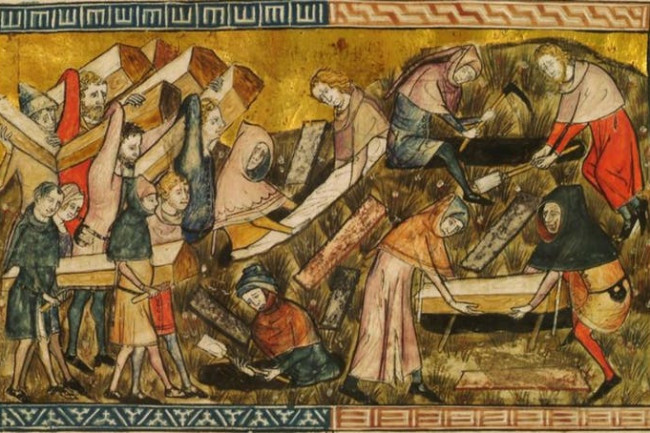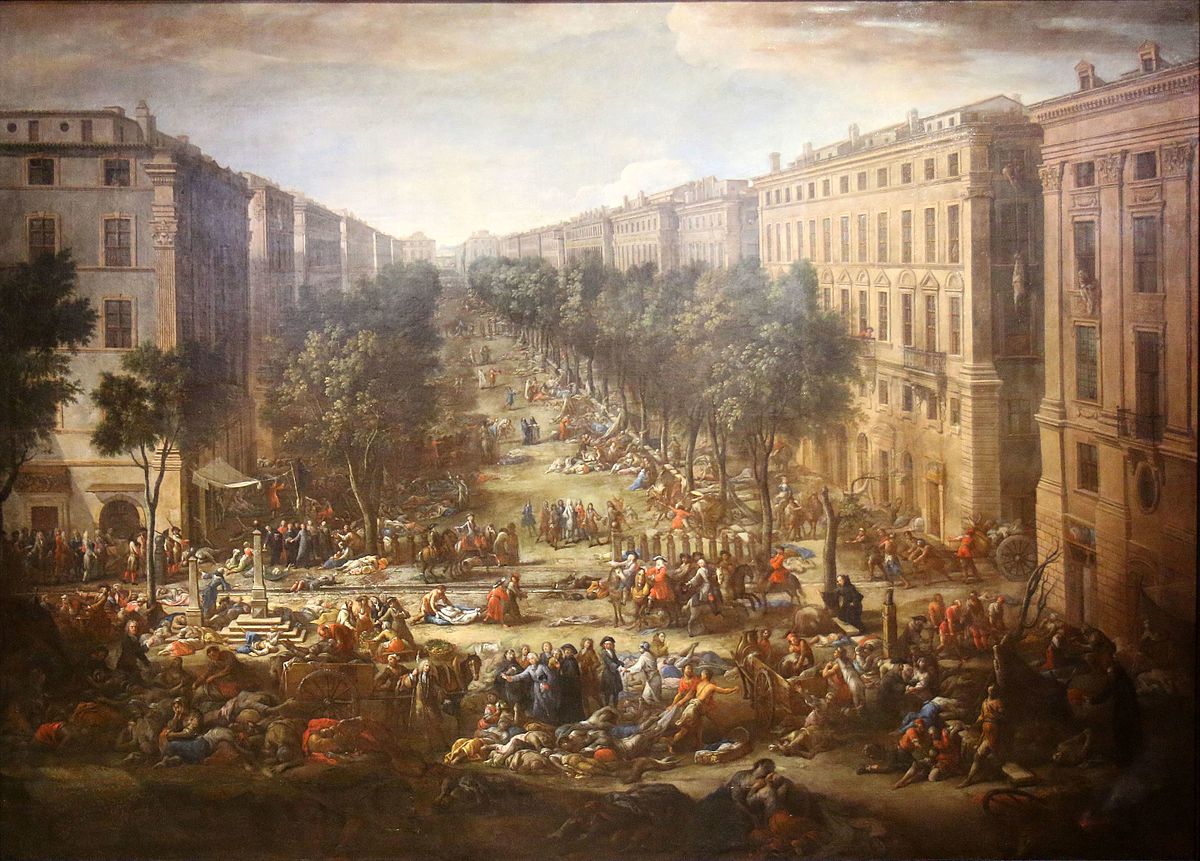
End Of The World? Standing amidst a pandemic that has razed the world down like skittles within the blink of an eye, we are probably up against one of the worst viruses in the history of the same. With no known cure and with the medical tests for a possible vaccine just kicking off, novel coronavirus has taken mankind by the scruff of its neck and has dumped it hard like pushovers. A handful of the populace even believes that we are staring at a pivotal event in history which will restore the balance between nature and humanity. When times are hard, history has always been rife with blooming conspiracy theories, mental breakdowns, panic pervaded slicker than water and trumped-up lies to serve one’s purpose.
However, fancies apart, with the world still fighting this menacing virus tooth and nail and with the bare minimum hope that things fall in place or it won’t be long before we stare at a real-life Outbreak.
We have decided to split this article into two to ensure that our readers understand the significance of these historical destructions. The source of this article has been LiveScience and it is called the End Of The World list, as that is what people might have thought back then too.
Prehistoric Epidemic: 3000 B.C.
Known as one of the best-preserved prehistoric sites in Northern China, Hamin Mangha bore witness to the indiscriminate obliteration of an entire local populace. Spanning from little kids in the lap to senile people bed-ridden for life, an epidemic swept out an entire village. Though the genesis and the cause of the epidemic were not really discovered, skeletons of various size and shape allude to the fact that it was a strong outbreak of an unknown disease and the dissemination was faster than expected.

A proper site for burial could not be found. Hence, corpses were disposed inside a house which was later burnt down. However, before Hamin Mangha was discovered, there was another burial site which riveted the fanfare that was called Miaozigou in the epicentre of the pandemic. This played an instrumental sidekick to Hamin Mangha for the improper burial of the dead.
Plague Of Athens: 430 B.C.
Sporting a crossover between Birdbox and 300, this plague was an incarnation of death himself on the planet. War on one front and an epidemic on the other, left Athens reduced to dust from its erstwhile scintillating self.
Though the exact date is to be discovered, somewhere around 430 B.C. a disease broke out in the much-revered land of Athens which claimed an alarming 1,00,000 lives. History bore witness to a sudden madness that bred carnage on absolutely healthy people. The reasons varied between the two likeliest diseases. They included Ebola and Typhoid fever. Apparently going by the lines of the illustrious Greek historian, Thucydides it read those sound people were attacked by heat on their head, with their eyes turning blood-red, their tongue turning bloody and exuding an obnoxious smell. References for the same were also found in The History of the Peloponnesian War. The same book was translated by Richard Crawley.

The army of Athens was compelled behind robust edifices which kept them hidden from the killing appetite of the Spartans. They finally bowed down in surrender to the Spartans in 404 B.C.
P.S: This isn’t a story of Leonidas. So we can skip to the next.
Antonine Plague: A.D. 165-180
People, who are so highly intrigued by the widespread of Coronavirus and are romanticizing the imminence of a thousand deaths must take a lesson from this plague. Not only did this plague take away the lives of 5 million people, but also destabilized an empire at the peak of its power and cemented the flourish of Christianity.
Despite Smallpox known for its infamy from one of the most recent outbreaks in the course of history, it had its roots dating from the rusty pages of history.
As penned by April Pudsey, a senior lecturer in Roman history at Manchester Metropolitan University, this plague came along with the soldiers of Rome who were returning home after a resounding victory against Parthia. However, shortly after their return, bodies started falling left and right in the middle of the streets. The entire army met its doom at the hand of this unknown epidemic at that point in time which was also laced with the cessation of Pax Romana (a treaty of Roman peace).
After the mitigation of this epidemic that left Rome crumbling on its creaking bones and scavenging for small glories, the nation imploded from within as it faced a barrage of invasions coming from barbarian groups. Remember when Russel Crowe kept on screaming Roma Victor against their first band of enemies. Yes, we are referring to the same just with the absence of Maximus.
Plague Of Cyprian: A.D. 250-271
A plague that found its root after the name of a deferential man, St. Cyprus, a renowned bishop in Carthage (currently Tunisia), was flagged as the end of the world. One of the primary reasons to have touted this as one of the worst epidemics in the history of mankind is due to the number of deaths in one single day. Numbers were staggering as they read 5000 deaths in one day just in the country of Rome.
In 2014 a mass burial site was discovered in Luxor that was supposed to house plague-victims. On investigating their bodies were found smeared in a massive layer of lime which was apparently considered to be an effective disinfectant in those days. Three kilns were spotted to manufacture lime and the bodies were incinerated in a titanic bonfire.

In a work called De Mortalitate penned by Cyprus, the cause of the epidemic is attributed to the constant outflow of the bodily fluids, thereby draining one’s physical strength and also wounds around one’s mouth.
Plague Of Justinian: A.D. 541-542
The decline of the Byzantine Empire did not come at the hands of enemy flailing swords. It came from a Bubonic plague that recurred in periodic intervals. It struck a major blow in the military forces of the empire and finally left it hamstrung.
The plague was named after the emperor of the region, Justinian. He was one of the greatest kings of the empire, extending his vice over the Middle East to Western Europe. The renowned Hagia Sophia was built under his reign.
An interesting trivia suggests that this plague killed more than 10 per cent of the entire world’s population.
The Black Death: 1346-1353
This plague changed the course of human history as it spanned from Asia to Europe. Estimates state that it killed half of Europe’s total populace.
This plague was caused by a strand of the bacterium called Yersinia pestis which is extinct today and was disseminated by fleas on rodents. The mass burial had to be done given the urgency of the situation. This end of the world situation was eventually handled, though it took a lot of time.

There was a silver lining to this mass-decimation of humans. With labour hard to find, better pay ensued for workers and they also got access to meat and higher-gentry bread. This also was a probable breakthrough in finding the way to technological invention.
Cocoliztli Epidemic: 1545-1548
The infection that led to this epidemic was an incarnation of viral hemorrhagic fever that led to the death of 15 million indigents of Mexico and Central America. Already emasculated by natural famines, this plague was a telling blow to the residents of the nation.
A recent study into the plague which entailed the DNA examination of the species led to the discovery of the real cause of the disease. It is believed that the bodies were infected by a subspecies of Salmonella which is capable of unleashing fever that can lead to typhoid. This fever is generally classified as enteric fever and is still a major health threat today. Another trivia about this epidemic suggests Cocoliztli is the Aztec word for the pest.
American Plague: 16th century
Another age-defining moment of the 16th century that displaced the population of an entire region was the American plague. Transported to America by European explorers, these were a posse of Eurasian diseases. The predominant one that ruled the roost amongst the cluster was smallpox that eradicated 90 per cent of the indigenous population of Western Hemisphere.
Already emasculated by this massive plague, America was further pushed to the cusp of obliteration through a couple of invasions in a short span of time and it also led to the snuffing out of two of the world’s ancient civilizations, namely Inca and Aztec. Hernan Cortes annexed the Aztec capital of Tenochtitlan in 1519 and it was ensued by Fransisco Pizarro’s conquering of the Incas in 1532.
With the disease and the invasions running amok through the indigents, the European explorers of the later age started visiting America more frequently as there was less opposition.
Great Plague Of London: 1665-1666
Black Death was not completely snuffed out until the late 1600s as its last episode came down the pike in 1665 and it transpired in Britain. This was followed by a major exodus that was led by King Charles II. Once again it was the rodents who pulled the strings of transmission.

The plague’s last instalment took along with it a staggering 1,00,000 casualties that comprised 15 per cent of Britain’s population.
It seems that plagues have always been accompanied by an ineluctable disaster and London wasn’t an exception to the same. Shortly after the plague subsided, the city was ravaged by a massive fire that found its place in the history with the appellation of Great Fire of London and very little of the city remained unscathed.
Great Plague Of Marseille: 1720-1723
We are practising self-quarantine measures in the current morbid situation of the Coronavirus. However, it doesn’t really work all the time. A perfect archetype of the same was the great plague of Marseille. Vox populi states that this virus found its way to citizens of the city through rodents from a ship called Grand Saint Antoine that was placed in quarantine.

In the following three years more than 1,00,000 people died from this deadly virus, that roughly constituted to 30 per cent of the population. The cost of lives every time pushed things from bad to worse, though the inevitable end of the world that seemed, never did happen.
This is just halfway down the series. The End Of The World list, as we like to call it, continues. We have another ten deadly plagues that posed itself to humanity as life-extinguishing threats coming up in the next part. This is in no-way the end of the road or the end of the world. Stay tuned.







